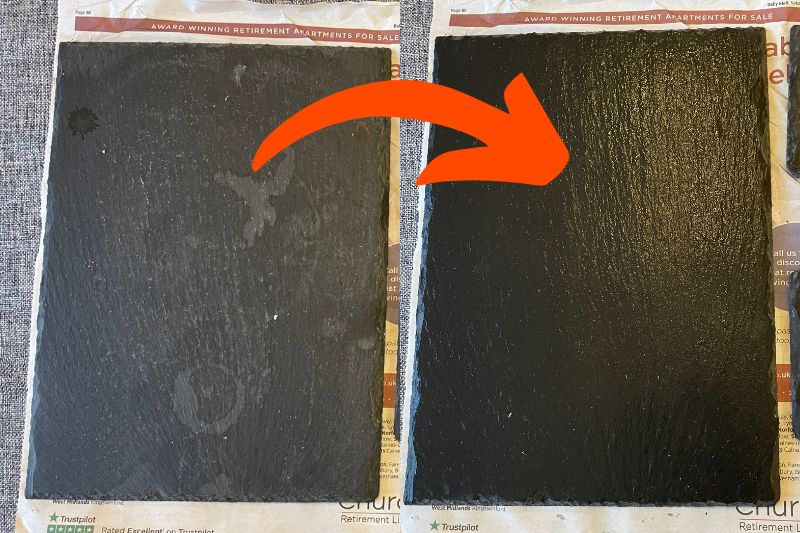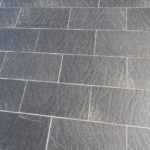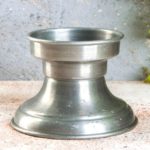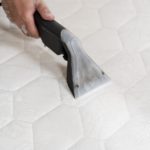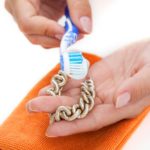Slate placemats offer a unique and sophisticated touch to any dining table. Known for their durability and elegant appearance, these natural stone accessories can enhance a dining experience while protecting the dinner table from hot plates.
However, like any other material, slate requires proper care and maintenance to keep its natural beauty intact. Find out how you clean slate placemats below.
Note: Many slate placemats have been treated with a food-safe acrylic to ensure they’re easy to clean, water repellent and somewhat stain resistant. However, not all slate has been treated this way, so some placemats are prone to getting stained and scratched.
How to Clean Slate Placemats and Coasters
Always do a quick patch test with your chosen cleaning solution before you use it. A test will tell you if your cleaner will react badly or have no effect on the slate.
Based on the result of your patch test, you can either continue using the product or choose something different.
Tools you’ll need:
- Neutral-coloured cloths
- Soft brush
- Washing-up liquid
- Bowl
- Warm water
- Food-safe mineral oil
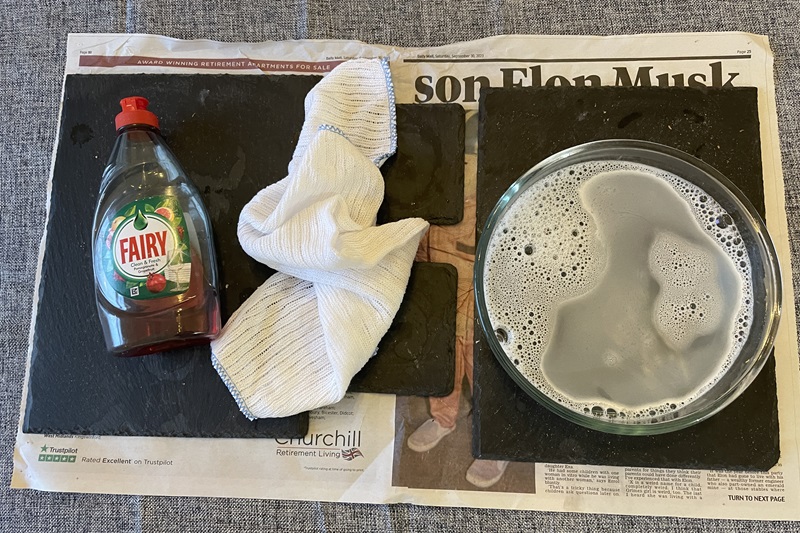
Steps to follow:
- Brush the crumbs off your slate placemat. Use a soft brush or a dry cloth.
- Mix a blob or two of washing-up liquid and warm water in a bowl.
- Grab a neutral-coloured cloth (ideally lint-free).
- Soak it in the water, then wring it out. The cloth should still be damp.
- Wipe the placemat down. Work from one side to the other.
- Remove excess water from the surface with a second cloth.
- Ensure the placemat has been wiped down.
- Allow to dry.
- Repeat the steps above for the rest of your placemats and coasters.

Optional: Treat your slate placemats and coasters with a food-safe oil like Materialix Food Grade Mineral Oil or Brandon Bespoke Pure Mineral Oil. This will help restore colour and character to the pieces and make the surface easier to wipe down, somewhat scratch-free, and protected for longer.
Work the mineral oil into the clean placemat using a third cloth. Continuously buff the surface until the oil has been worked in.
You don’t have to treat your slate placemats every time you wipe or wash them. You should, however, aim to treat your slate when it’s marred by a stain or when you start to see the first signs of wear and tear.
Tip: Remove grime immediately from the slate placemats. By doing this, the juice and grease in the food won’t have too much time to settle and blemish the slate surface.
How to Clean and Remove Stains from Slate Cheeseboards
To remove stains from a slate cheeseboard, follow the steps below:
- Put a blob of washing-up liquid directly onto the stain.
- Work the soap into the mark using a clean toothbrush.
- Wait about 20 minutes.
- Rinse the area clean using a damp, neutral-coloured cloth.
- If the stain persists, continue with this method.
- In a shallow dish, mix water and bicarbonate of soda to create a thick, spreadable paste.
- Pop the paste on the stain.
- Wait 15 minutes
- Wash the paste off the surface using a damp, neutral-coloured cloth.
- Repeat the steps above if necessary.
- When you’re done, clean the board using the steps above under ‘How to Clean Slate Placemats and Coasters’.
- Treat the slate placemats with mineral oil. Buff the oil into the slate using a soft cloth.
Note: If you’ve got engraved slate placemats and coasters, be careful when you add mineral oil to them. The solution often darkens any designs, so it would be better to work around them.
How to Remove an Oily Stain from a Slate Placemat
If you’ve accidentally got some grease on your slate placemat, you need to react quickly and coat the stain in either cornflour or bicarbonate of soda and leave it on the surface overnight.
The next day, you can brush the area and inspect the blemish. Based on what you see, you’ll either need to repeat the steps above or clean the area with washing up liquid and water. After treating the stain, you must allow the placemat to dry naturally.
Tip: Try not to drag objects (cutlery and plates) around on the slate surface, as this can cause scratches. You can treat the scratches in question by rubbing them with mineral oil, but it’s just additional work for you.
FAQs on Cleaning Slate Placemats
What shouldn’t you use on slate?
Here are a few items and solutions you shouldn’t use on slate placemats:
- Don’t immerse the whole placemat in water. You can just wipe the surface with a damp, soapy cloth to clean it.
- Avoid acidic cleaners. They can weaken and permanently damage the slate.
- Chemical heavy cleaners like bleach.
- Abrasive cleaning tools. Scourers and wire brushes, for example, will scratch the slate surface.
- Items that are not of a food-safe standard. You don’t want to coat your placemat, a surface that’s very close to where you eat, in something poisonous.
Note: If your slate placemats and coasters have a backing, be careful that you don’t get it wet. Moisture could dislodge the backing from the slate. In turn, the slate will become scratchy and can mark a surface, for example, a wooden table.
Can you put slate placemats in a dishwasher?
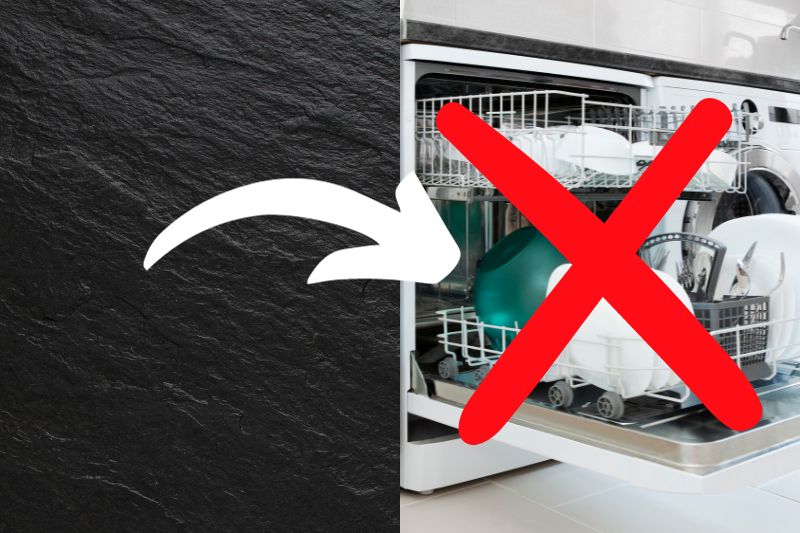
It’s best to wash slate placemats and coasters by hand, even if you’re told that the items are ‘dishwasher safe’.
As long as you stay on top of the general cleaning and remove stains immediately, a quick wash is all your slate placemats will need. They, therefore, won’t need to be cleaned in such a harsh way.


Bethan has a passion for exploring, reading, cooking and gardening! When she’s not creating culinary delights for her family, she’s concocting potions to keep her house clean!
